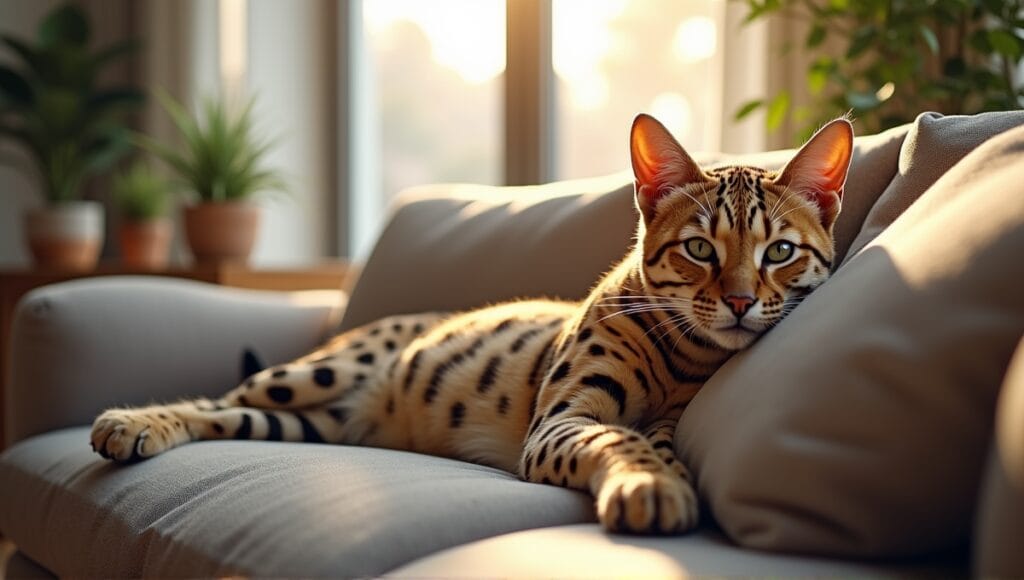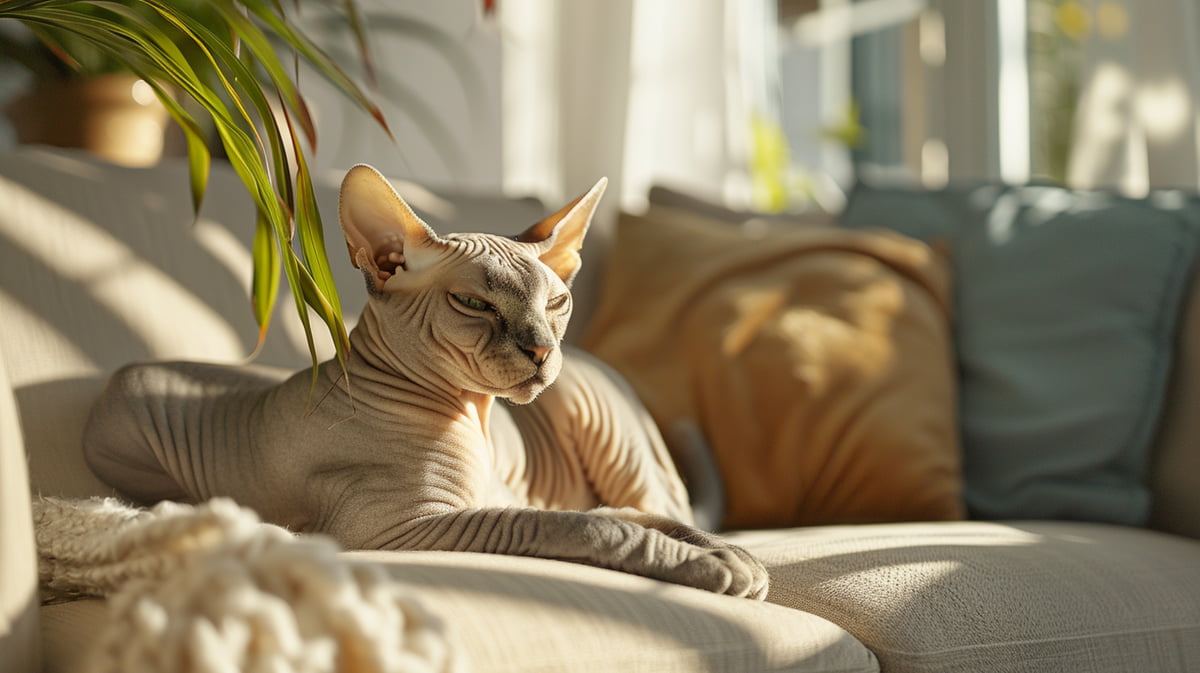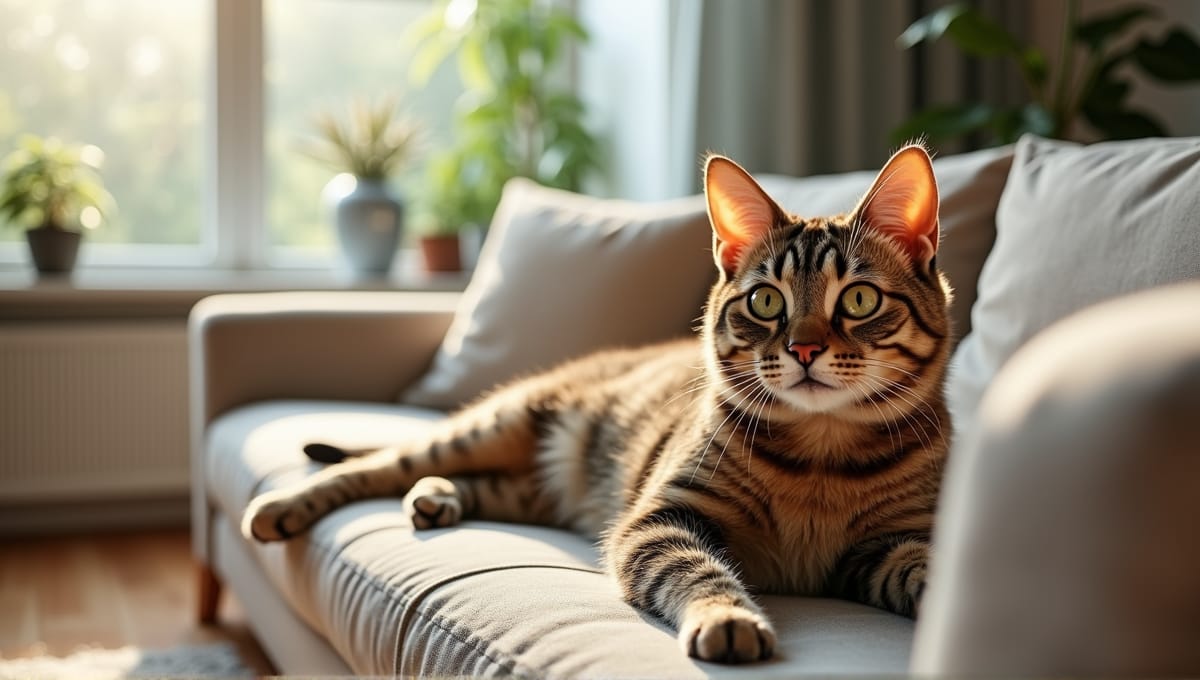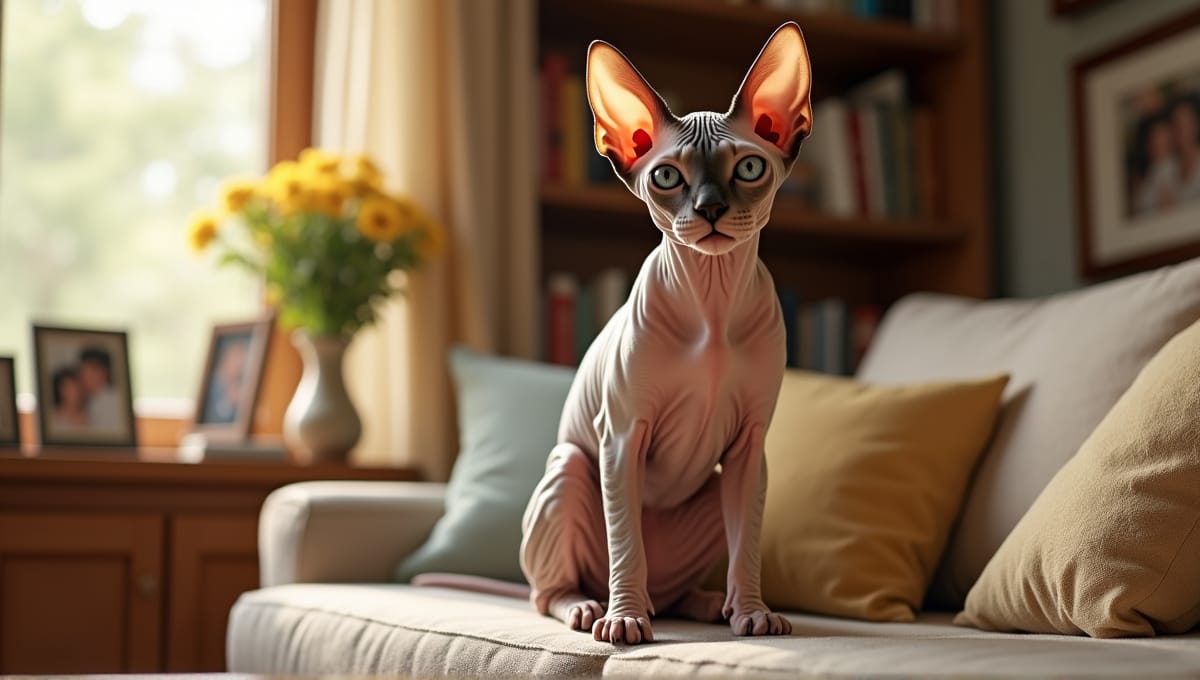Ocelot cats are wild cats and are not domestic pets. I’ve encountered plenty of people enamored with their exotic looks, as they are truly stunning animals. However, they require large ranges and a specific prey diet. Owning an ocelot as a pet is also illegal in nearly all locations and for good reason. It would be unethical to keep one as a pet.
Physical Characteristics of Ocelot Cats
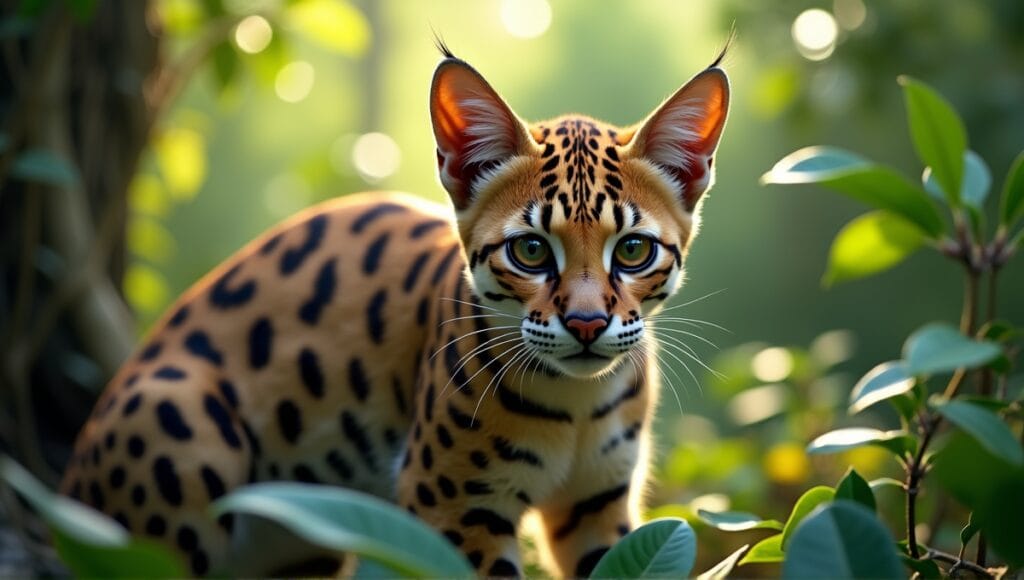
Ocelot cats are absolutely beautiful. Their coat is a true work of art with rosettes or spots in an array of unique patterns. These markings help them blend into their environment, and you’ll immediately notice their slender physique.
Ocelots are a medium-sized species of wild cat. They are larger than a typical house cat yet smaller than most other big cats. Mature ocelots usually weigh between 18 and 35 pounds and have a body length of 28 to 35 inches – and that’s not including their long tail, which can measure an additional 10 to 16 inches.
Ocelots have an enchanting face, with their main facial characteristic being their large eyes. These are specially adapted for exceptional night vision. Additionally, their ears are rounded and sit on top of their heads, constantly perked to detect all sounds. Toward the back of each of their ears is a notable white spot.
Some prominent ocelot features include:
- Coat with rosette pattern
- Long tail to help aid balance
- Strong limbs
- Retractable sharp claws
- Powerful senses
Relatively speaking, ocelots are quite distinct from other wildcats. They are larger than margays and smaller than jaguars. Their coat pattern is far more intricate than that of a leopard cat. Functionally, ocelots are designed to live in trees and water. Their powerful legs and sharp claws make them excellent climbers, and they have a strong body with water-resilient fur to make swimming very easy. If you’re interested in learning about other exotic cat breeds, there are many fascinating species to explore.
Habitat and Distribution of Ocelots
Ocelots have one of the largest ranges of any wild cat species in the Americas. They are found from the southwestern United States to northern Argentina. They are very adaptable cats and can be found in a wide range of habitats. However, they do require dense vegetation for hunting and resting.
Tropical rainforests are an ideal habitat for ocelots. They also live in coastal mangroves, deciduous forests, and thorn scrub. Ocelots can also live in different elevations. For example, they are found from sea level to 1,200 meters in some locations.
Ocelots are territorial animals, and an adult male’s territory can be as large as 30 square kilometers. Females have smaller territories. However, habitat fragmentation is a major threat to the species. As humans develop land, ocelots are often left in isolated pockets of their former range. As a result, they cannot mate with other ocelots, and this leads to inbreeding.
Conservation efforts mainly focus on protecting these diverse ocelot habitats and ensuring that they remain connected. By protecting areas of their range and creating wildlife corridors between different regions, we can ensure that ocelots will survive for years to come.
Ocelot Behavior and Lifestyle
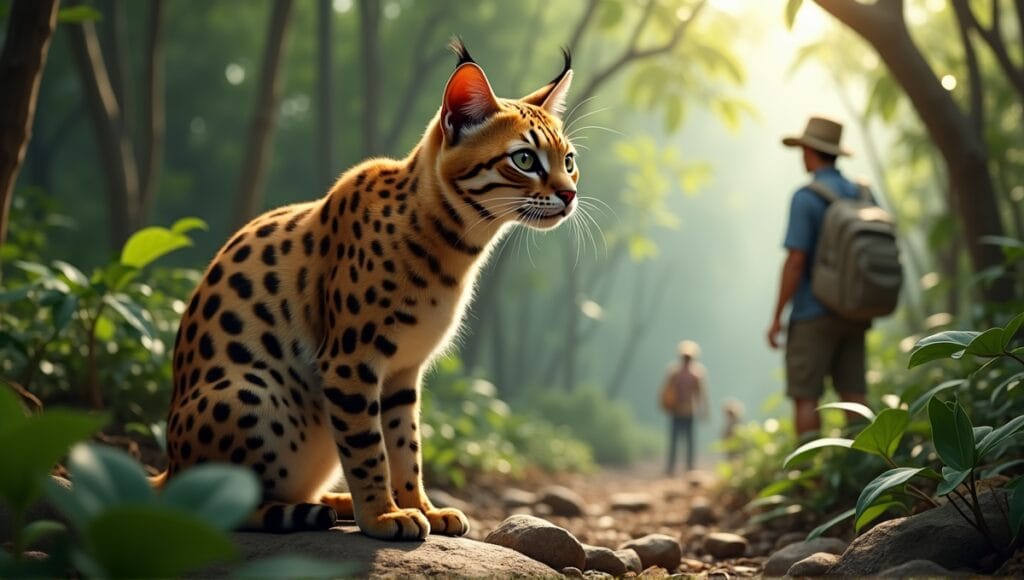
Ocelots are nocturnal. They’re most active during the twilight and nighttime hours. This nocturnal behavior allows them to avoid competition with diurnal predators and ensures they are active when their prey is active.
They are also excellent hunters. They primarily eat small to medium-sized mammals (with rodents being a primary food source), as well as birds, reptiles, fish, and occasionally small primates. Ocelots are opportunistic eaters, so they eat whatever is most readily available in their environment.
In terms of their social structure, ocelots are solitary animals. The only time adults interact with each other is during mating. They communicate through scent marking, vocalizations, and body language, all of which help them establish and protect their territories.
Ocelots have an interesting mating process:
- Females are only in heat for about 5 days out of every 25 days.
- The gestation period lasts for approximately 70 days.
- The average litter size is 1-2 kittens.
- Mothers raise the kittens by themselves until they are up to two years old.
- Young ocelots then go off and establish their own territories.
In the wild, ocelots can expect to live to about 10 years old. In captivity, they often live into their early 20s with proper care. Their habitat quality, access to food, and human activity in the area all impact their life expectancy. If you’re curious about the lifespan of other unique felines, you might want to learn about the hairless cat lifespan.
Ocelot Conservation Status
Ocelots are facing challenges. Their numbers have decreased as a result of various threats. The primary threat to their population is habitat destruction. When humans clear forests for agriculture and development, ocelots lose their homes. Additionally, this fragmentation creates barriers between ocelot populations, limiting genetic diversity.
The illegal pet trade is still a concern. Some people want to keep ocelots as a pet due to their exotic appearance, causing stress on wild populations. While the international trade of ocelots is banned, it still occurs illegally and is nearly impossible to regulate.
Conservation efforts are helping ocelots. Throughout their range, organizations have established protected areas where they’re making a comeback. International laws also protect ocelots, making it illegal to trade them internationally or their parts. As a result, international trade of ocelots has decreased significantly, making it as less of a concern.
There are also success stories of ocelot conservation. In the U.S., careful management has helped stabilize populations in the state of Texas. Reintroduction programs are considered where they were once common. Finally, education campaigns help people learn more about these beautiful cats and why they are important to protect.
Ocelots and Human Interaction
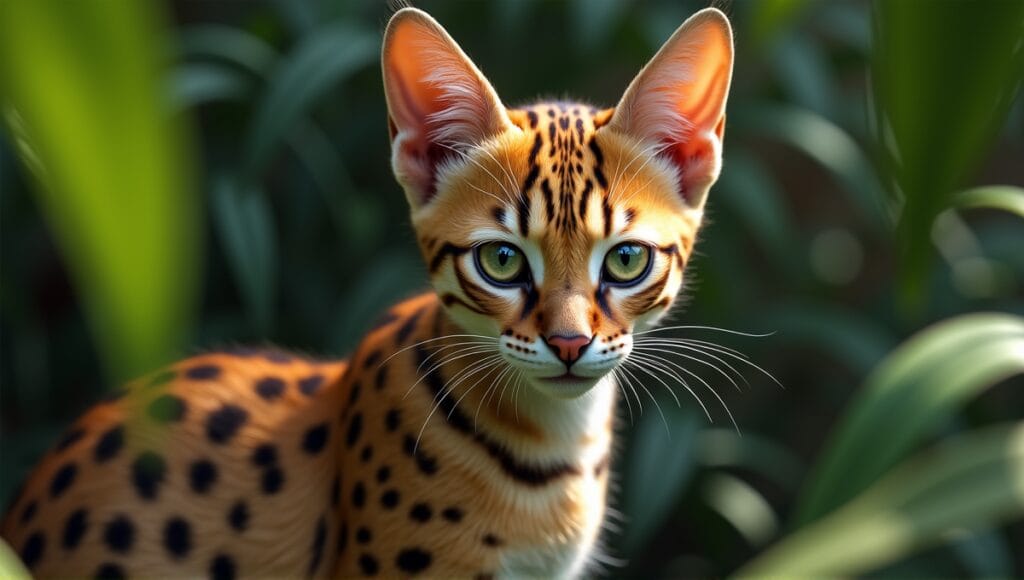
Ocelots have a checkered past with humans. People used to value their stunning fur, and the resulting demand fueled excessive hunting. By the 1980s, ocelot populations had drastically declined. While the fur trade is now banned, the impact of hunting still affects ocelots today.
Owning an ocelot as a pet is a contentious topic. In many places, it’s illegal. These are wild animals with specific requirements that are difficult to replicate in a home environment. Ocelots need vast territories, specialized diets, and expert care, which most people can’t provide. Therefore, it’s best to avoid trying to make ocelots into pets.
As humans encroach further on ocelot habitat, the cats encounter new threats. They occasionally wander into human settlements to search for food, leading to conflicts with people and domestic animals. To mitigate this, conservationists create wildlife corridors and educate communities about how to peacefully coexist with ocelots.
Many indigenous groups hold ocelots in high regard. Ocelots frequently appear in their mythology and art, and some groups view the cats as a symbol of agility and strength. Highlighting the cultural importance of ocelots can help advocate for their protection.
Some conservation efforts allow humans to responsibly engage with ocelots through ecotourism. In a handful of reserves, you can join a guided tour to spot these elusive cats. When managed sustainably, this supports conservation and local economies while also helping people value ocelots as a beautiful and integral species in their natural habitat.
Unique Adaptations of Ocelots
Ocelots are truly a remarkable product of evolution. Their eyes are six times more light sensitive than human eyes, which makes them exceptional at night vision. They can practically see in the dark. They have excellent pupil control to maximize light intake.
Their retractable claws make the ocelot an impressive climber. They can extend their claws while climbing a tree, or they can retract them while walking to make themselves nearly silent. This feature also sharpens their claws while they climb. Consequently, they frequently sleep in trees to prevent ground predators from reaching them.
The ocelot’s teeth are designed specifically for a carnivorous diet. They have sharp canines to grasp and kill prey and specialized molars for meat cutting and bone crushing. This tooth structure enables them to consume an impressive diversity of prey items.
Their coat pattern is an outstanding example of camouflage. The spots and rosettes break up their body shape in the speckled light of a forest. As a result, they are invisible to both prey and predators. The coat pattern does vary slightly between individual ocelots, which helps them survive in slightly different habitats.
Ocelots are surprisingly strong swimmers. Their muscular body and water-proof fur allow them to swim across rivers. This adaptation broadens their range of habitats and prey animals. Occasionally, you may even see an ocelot fishing in shallow water. For those interested in other unique feline adaptations, you might want to explore long-haired cat breeds and their special coat characteristics.
Ocelot Research and Scientific Studies
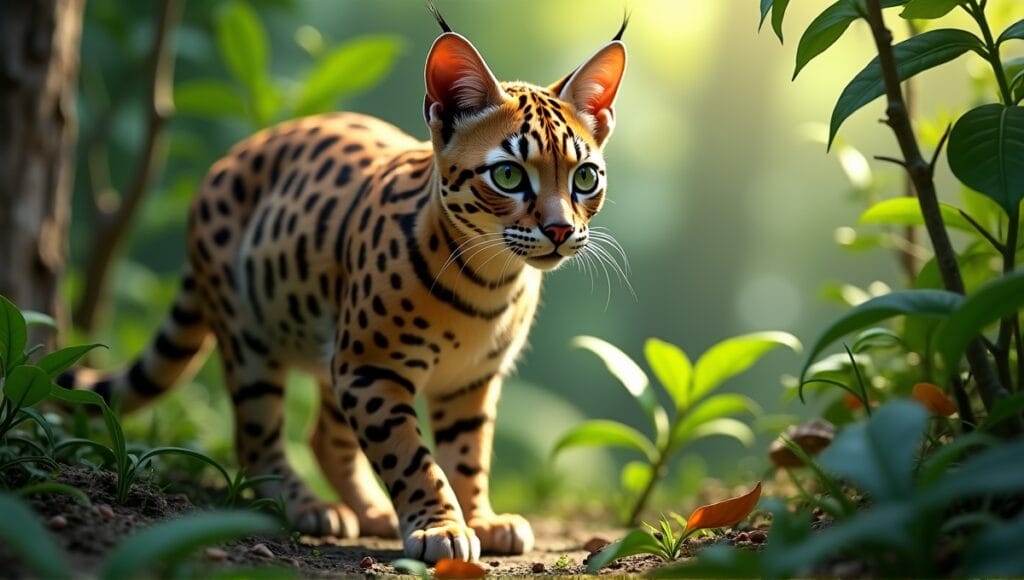
Camera traps have transformed ocelot research. These motion-activated cameras take pictures of ocelots without the cats realizing it. Scientists can then use this data to estimate population numbers and behaviors. It’s a great non-invasive way to learn about the ocelot in the wild.
Genetic research is revealing the diversity of ocelot populations. By analyzing DNA samples, researchers can identify different subspecies of ocelots. This data is important for conserving the species. We want to ensure we conserve the genetic diversity of ocelots throughout their range.
Tracking ocelots has advanced with technology. GPS collars allow researchers to track detailed movement data and habitat use. Additionally, radio telemetry can track ocelots for a very long time. This information allows scientists to understand territory size, hunting behaviors, and social interactions.
Captive studies provide an in-depth look at ocelot behavior. Zoos and wildlife centers can study ocelot behavior up close in a controlled setting. This allows us to study detailed information about diet, reproduction, and social behavior. While it’s not the same as studying wild behavior, it’s valuable data.
Studying the ocelot also contributes to our wider knowledge of wild cat biology. By studying their unique behaviors and adaptations, we can learn more about how wild cats evolved. Understanding the ocelot better will help us develop better conservation tactics for all wild cats. This research also helps us understand the characteristics of other felines, including domestic cat hybrids.
Ocelot Breeding and Development
Ocelot reproduction is an intriguing topic. The gestation period is approximately 70 days. Females typically have one or two kittens, though they may occasionally have three. The birthing den is usually well hidden, making it challenging for predators to find and attack the defenseless kittens.
Ocelot kittens progress through these key milestones:
- They are born blind and helpless, weighing just 200 to 300 grams.
- They open their eyes at 15 to 18 days old.
- They start eating solid food at 6 to 8 weeks.
- They begin venturing outside of the den at 3 months.
- They reach their adult size by 9 to 12 months.
- They become independent at 1 to 2 years old.
Mother ocelots invest a lot of time in caring for their offspring. They nurse their kittens for several months, and as the kittens grow, their mothers teach them how to hunt. Ocelots learn to hunt by watching their mother and practicing these skills.
When ocelots mature, they leave their mother’s home range. This means young ocelots disperse from their mother’s territory and establish their own home ranges. Young males typically disperse further than females. Dispersal is critical to increase genetic diversity and ensure that ocelots do not accidentally inbreed.
One of the biggest challenges in ocelot conservation is that most dispersing ocelots (especially males) move through habitat that is currently not suitable for ocelots. This is called “inferior” habitat, and many male ocelots die trying to find and claim their own territory.
There are several challenges to ocelot breeding in captivity. Ocelots are very sensitive animals, so any stress can impact their ability to reproduce. Therefore, ocelots need a lot of space, and captive breeding programs also need excellent animal care and staff psychology.
It takes a lot of patience, but successful breeding programs help maintain genetic diversity in the ocelot population. It also helps captive breeding programs contribute to future reintroduction programs. If you’re interested in learning more about feline reproduction, you might want to explore cat breeding in general.
Before We Go
Ocelots are intriguing wild cats with special adaptations. Their spotted coats and nightly hunting make them adept, elusive predators. Conservation is imperative to ensure their survival.
You’ve discovered their physical characteristics, behavior, and the threats they encounter. Acknowledging these incredible cats allows us to conserve their populations for generations to come. And as cat enthusiasts, we can admire the beauty and sophistication of the ocelot while also backing conservation efforts to protect their ecosystems.


